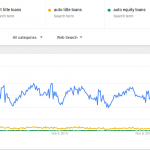- Paying the Deficiency
A deficiency is defined as the difference between your outstanding balance plus any additional fees and what the lender receives after reselling the vehicle. For example, if your balance at the time of the repossession is $15,000 and the lender sells the vehicle for $5,000, the deficiency would be $10,000 plus not including any additional fees. You could be charged extra fees for the repossession or premature termination of the loan or lease. In most states, the lender can take you to court to collect the deficiency if the repossession and resale were legal. Although uncommon, if the resale amount exceeds your outstanding balance and other fees, the lender is obligated to pay you the difference. You could have a legal defense if the lender did any of the following concerning the repossession: Breached the peace, exceeding the required time to file the suit, or the vehicle was not sold in a commercially acceptable manner. It is best to seek the advice of an attorney concerning your options.
- Talking with Your Creditor
It is important to remember that it is easier to attempt to prevent a repossession than fight it after the fact. Contact your lender ahead of time if you think you will be late with a payment or are experiencing financial difficulties. Most of them will work with you if your problems are short term. They would rather avoid a repossession also. If the lender agrees to modify your original contract, always get it in writing. If you simply can’t make the payments, a voluntary repossession can save you some repossession and other fees. Despite this, you would still be responsible for the outstanding balance. Source ‘Statistics‘
- Why is the Creditor Allowed to Repossess Your Car?
The vehicle that you lease or purchase is basically considered a security interest or collateral until the obligation is fulfilled. This is similar to a house. If you fail to pay the mortgage, it will go into foreclosure. The laws for repossession vary slightly from state to state, but a security interest essentially means the creditor can take the vehicle back at any time if you fail to fulfill the agreement. While there are a number of situations that can put the agreement into default, the most common are non-payment or failure to maintain proper insurance coverage.
- A Partial Payment Won’t Prevent a Repossession
You may think that a partial payment will look better than paying nothing, but in reality, this will not prevent your vehicle from being repossessed. The lender views the situation as all or nothing. You are better off waiting until you can pay the full amount at once.
- Voluntry Repossession Will Hurt Your Credit
The missed payments before your repossession will appear on your credit report as will the repossession. Both items are considered negative marks and will stay on your credit report for at least seven years. While your credit score will take a dive, if you continue to pay your other bills on time, your score will eventually recover.
- See if You Can Get the Vehicle Back
In some instances, the lender will let you get the car back prior to selling it if you pay the balance and any additional fees in full. In rare cases, the creditor may reinstate the loan under a new contract and payment plan. In most cases, the repossession will still remain on your credit report, but the new payment and loan amount will be added to your report. None of the above applies if you purchase the vehicle back at an auction. the following things below should be considered before attempting to reinstate your loan:
- Can you afford– It is important to take a close look at your financial situation to determine if you can truly afford the vehicle. This includes maintenance, insurance, gas, registration, and other related expenses. You have to remember that your car was repossessed for a reason. If those reasons still exist, there is no point in trying to get the car back.
- Do you have access to other transportation?– If you have access to public transportation or can carpool with others, this could be a better option than trying to pay for your loan in full to get your car back. This would be a short-term solution until you can get back on your feet.
- Bankruptcy?– If you are considering bankruptcy, file before your vehicle gets repossessed. This is important because you may be able to keep your vehicle and work out a restructuring plan.




